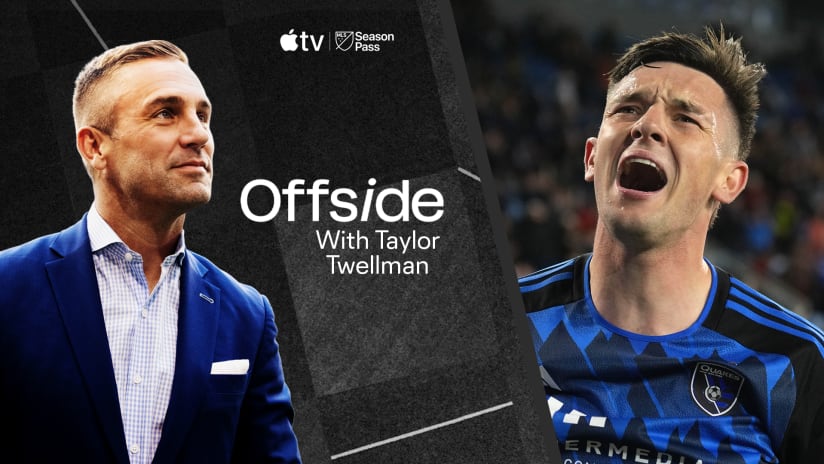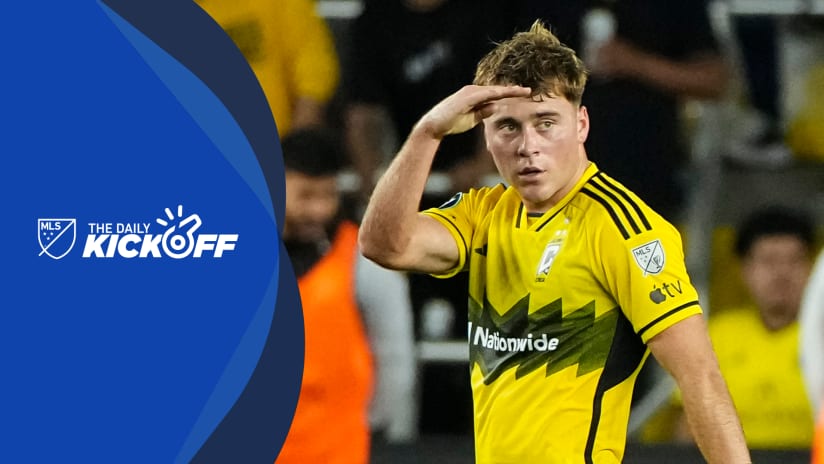Dwayne De Rosario has always done his part. Despite periodic dips in form here and there over 11 remarkable seasons, his talent has never waned.
A coach's job, then, is always to get the best from DeRo, to carefully arrange things for success. This is all tactically topical, of course, because of De Rosario’s extraordinary week, culminating in his three-goal, one-assist assault on helpless Real Salt Lake this past Saturday.
The habitual question with De Rosario is always about his optimum tactical deployment: Is he a forward, or better when stationed further back, picking up balls earlier, assisting with possession and running at defenders at higher speeds?
It’s really no different than long-standing conversations about Landon Donovan, and the debate traces back as far.
WATCH: DeRo's stunning hat trick vs. RSL

De Rosario was a forward through and through when he collected his first of two MLS Cup MVP medals, then with San Jose. It was Dominic Kinnear who moved a maturing De Rosario from forward to attacking midfielder.
As with so many adjustments, it was equal parts tactical and personnel-related. Ricardo Clark and Danny O'Rourke were in the middle of San Jose’s 4-4-2 back in 2005. Both, however, were defensive-minded types, and Kinnear needed more offensive punch from midfield.
So in a “Why not try it” moment, he changed fortunes for so many. De Rosario flourished as an attacking midfielder as the team — which relocated to Houston after that season — went on to win two consecutive MLS Cup titles.
The Dynamo’s Robertson Stadium pitch is among the league’s tightest. That always helped dictate Houston’s tactics. Kinnear liked his big strikers, and preferred to push forward quickly. (That mitigated the risk of losing possession that was always compromised by those compact dimensions.) There was never much messing about; a couple of passes in the back or in midfield, then something into the box for those big targets.
That made De Rosario the perfect attacking midfielder at Robertson. With a big fellow (Brian Ching, Kei Kamara, etc.) and sometimes a fast fellow (Joseph Ngwenya, Dominic Oduro, etc.) to stretch defensives vertically, gaps opened for De Rosario to pick up second balls or to run at the rear guard. Not much space, perhaps, but enough for DeRo.
The Canadian star had defensive duties and always attempted to do his part. But with Clark as his partner, there was typically enough defensive cover. De Rosario could focus on those signature dribbling bursts, confident that Clark could cover the additional ground in the Dynamo diamond.
Something else was at work, too. No system, from the W-M formation de rigueur through so much of the last century to Rinus Michels’ ingenious Total Football, can survive without some measure of dependable possession. In his early, impulsive days, De Rosario was habitually in a hurry toward goal. But a maturing DeRo was becoming more trustworthy in possession, making better decisions about when to hastening forward and when to move the ball deliberately, safely along.
Later, in Toronto, De Rosario was a jack of all attacking trades, deployed by a variety of coaches as a wide midfielder, an attacking midfielder, a second striker or even the primary target striker. There’s just too much too discuss in and around DeRo’s tumultuous time at BMO Field, so we’ll just have to wince and move along.
His brief stay in New York was an interesting tactical study. Hans Backe’s plan was to use DeRo behind two strikers, but that devolved into a frustrating exercise in redundancy – Thierry Henry’s propensity to drop deep into midfield to collect possession meant the Frenchman and the Canadian were sometimes fighting for the same spaces.
Would Backe have been better to tinker, to tweak roles around the park, turning various knobs until he tuned just the right tactical frequency? Perhaps, but we’ll never know. Within weeks DeRo was off to RFK.
United manager Ben Olsen has used De Rosario in central midfield roles and as a second striker – and both have come off successfully at times. Three weeks ago, the once-and-again league MVP candidate was an attacking midfielder who was simply spectacular in running the team’s counterattack in a 3-0 win over Chivas USA.
Going forward, Olsen’s choices on DeRo deployment will be a cocktail of the surrounding, available personnel and preferred tactics of the day. For instance, the attack can be less effective when he is a second striker with Stephen King as the second central midfielder (along with Clyde Simms in a diamond or sometimes in a slightly lop-sided flat midfield).
King is an adequate link man, but United’s midfield sometimes loses its attacking edge in that setup. It might mean United strikers receiving less frequent and less effective service.
On the other hand, if King can link quickly with attackers like Andy Najar and Austin da Luz (right and left of King in the midfield last weekend), De Rosario becomes a more effective option as a second forward.
There’s also the matter of Josh Wolff. At age 34, so late in a long season, the risk of being nicked or slowed by injury is considerable. The veteran is a great partner for De Rosario when he’s healthy – providing, again, sufficient passing and ideas behind them, and not just balls over the top that are wasteful against organized defenses.
If Charlie Davies (a less compatible partner for DeRo) is the best option at striker, De Rosario might be better as an attacking midfielder.
There are plenty of moving parts. There always have been with DeRo. That’s why they pay managers to sort it out.










